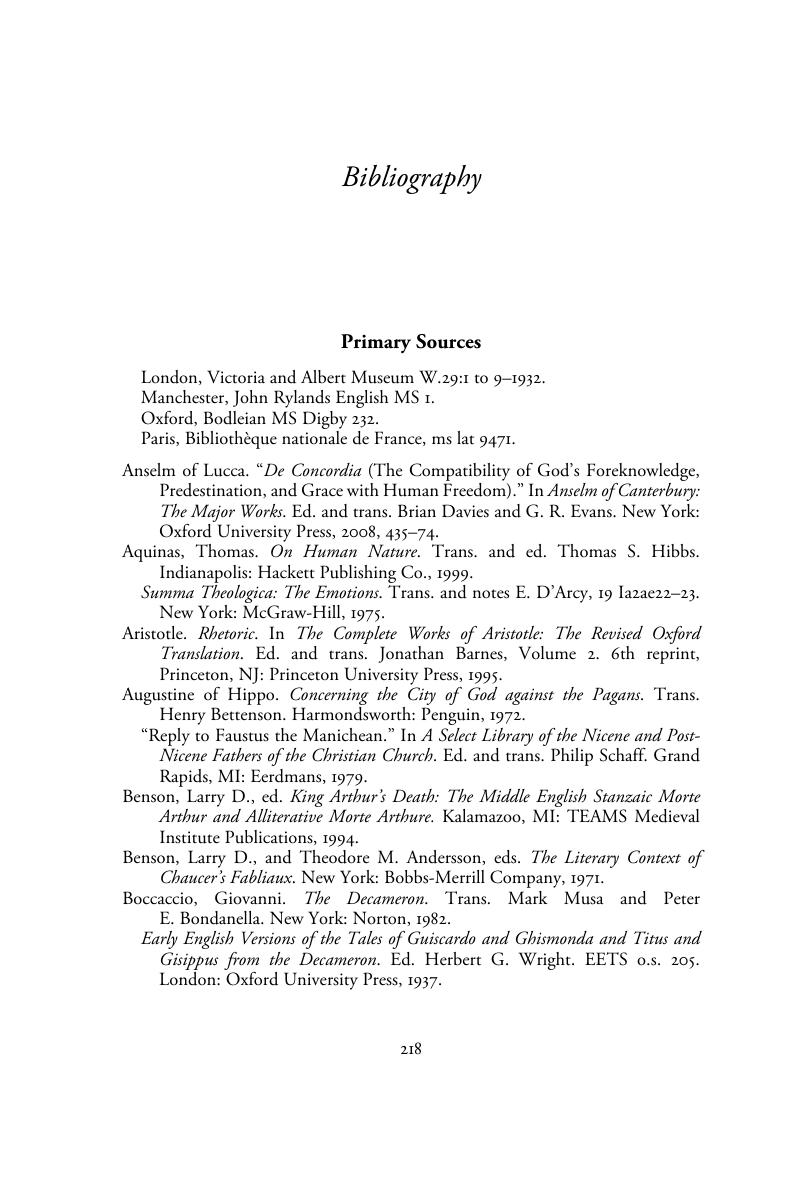Book contents
- Medieval Affect, Feeling, and Emotion
- Cambridge Studies in Medieval Literature
- Medieval Affect, Feeling, and Emotion
- Copyright page
- Contents
- Illustrations
- Contributors
- Introduction
- Chapter 1 Weeping Like a Beaten Child: Figurative Language and the Emotions in Chaucer and Malory
- Chapter 2 Imagining Jewish Affect in the Siege of Jerusalem
- Chapter 3 Engendering Affect in Hoccleve’s Series
- Chapter 4 Becoming One Flesh, Inhabiting Two Genders: Ugly Feelings and Blocked Emotion in the Wife of Bath’s Prologue and Tale
- Chapter 5 Accounting for Affect in the Reeve’s Tale
- Chapter 6 Affect Machines
- Chapter 7 Witnessing and Legal Affect in the York Trial Plays
- Chapter 8 Affecting Forms: Theorizing with the Palis of Honoure
- Afterword: Three Letters
- Bibliography
- Index
- Cambridge Studies in Medieval Literature
- References
Bibliography
Published online by Cambridge University Press: 22 March 2019
- Medieval Affect, Feeling, and Emotion
- Cambridge Studies in Medieval Literature
- Medieval Affect, Feeling, and Emotion
- Copyright page
- Contents
- Illustrations
- Contributors
- Introduction
- Chapter 1 Weeping Like a Beaten Child: Figurative Language and the Emotions in Chaucer and Malory
- Chapter 2 Imagining Jewish Affect in the Siege of Jerusalem
- Chapter 3 Engendering Affect in Hoccleve’s Series
- Chapter 4 Becoming One Flesh, Inhabiting Two Genders: Ugly Feelings and Blocked Emotion in the Wife of Bath’s Prologue and Tale
- Chapter 5 Accounting for Affect in the Reeve’s Tale
- Chapter 6 Affect Machines
- Chapter 7 Witnessing and Legal Affect in the York Trial Plays
- Chapter 8 Affecting Forms: Theorizing with the Palis of Honoure
- Afterword: Three Letters
- Bibliography
- Index
- Cambridge Studies in Medieval Literature
- References
Summary

- Type
- Chapter
- Information
- Medieval Affect, Feeling, and Emotion , pp. 218 - 238Publisher: Cambridge University PressPrint publication year: 2019



